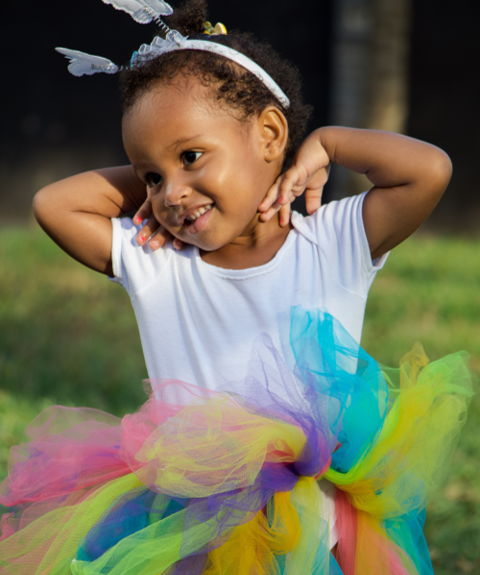
Prime areas of development and learning lay vital foundations in the early years.
The three Prime areas, Personal, social and emotional development (PSED), Communication and language (CL), and Physical development (PD), describe universal core aspects of early child development. They are time-sensitive because of biological factors that enable rapid brain connections, particularly in the first three years of life but continuing throughout early childhood. Developmental steps missed at this early crucial stage are much harder to address later on, so it is crucial that children’s interactions and experiences in the first few years support development in these fundamental areas.
All three Prime areas are always in action for a young child. In every activity, the child is experiencing feelings and developing a sense of self and others, is physically engaged through their senses and movements, and is learning to understand and communicate with others. It is through these aspects that a child accesses the world around them and relationships with other people, which in turn opens the door to learning in all areas. The Prime areas therefore strongly influence learning in the Specific areas of learning and development.
Development in each of the Prime areas affect the others: As babies and children develop their sensory abilities and movement, they can perceive and engage with others, and so develop in PSED. Engaging with others spurs more physical activity, and is the beginning of communication and language, which in turn helps build relationships, understanding of feelings and learning about health and physical wellbeing.
While the Prime areas are especially crucial to early years provision during the first three years, they remain centrally important for children’s development and learning throughout the EYFS and beyond, and should receive priority attention to ensure strong foundations in development and learning.
Personal, Social and Emotional Development
Who we are (personal), how we get along with others (social) and how we feel (emotional) are foundations that form the bedrock of our lives. As we move through life, we are continually developing our sense of self as we weave a web of relationships with self, others and with the world.
Personal, Social and Emotional Development is fundamental to all other aspects of lifelong development and learning, and is key to children’s wellbeing and resilience. For babies and young children to flourish, we need to pay attention to how they understand and feel about themselves, and how secure they feel in close relationships: in so doing they develop their capacities to make sense of how they and other people experience the world. Children’s self-image, their emotional understanding and the quality of their relationships affect their self-confidence, their potential to experience joy, to be curious, to wonder, and to face problems, and their ability to think and learn.
A holistic, relational approach creates an environment that enables trusting relationships, so that children can do things independently and with others, forming friendships. Early years practitioners meet the emotional needs of children by drawing on their own emotional insight, and by working in partnership with families to form mutually respectful, warm, accepting relationships with each of their key children.
Communication and Language
Experiences in the womb lay the foundation for communication, and a baby’s voice is evident from the beginning. Babies use their bodies, facial expressions, gestures, sounds and movements to seek connections and respond to those around them. Young children depend on back-and-forth interactions with responsive others to develop confidence as effective communicators and language users. Communication and language development are closely intertwined with physical, social and emotional experiences. Communication and language lay a foundation for learning and development, guiding and supporting children’s thinking while underpinning their emerging literacy.
Language is more than words. As children grow, they begin to be aware of and explore different sounds, symbols and words in their everyday worlds; a language-rich environment is crucial. A child’s first language provides the roots to learn additional languages, and parents should be encouraged to continue to use their home languages to strengthen and support their children’s language proficiency as they join new environments.
Children’s skills develop through a series of identifiable stages which can be looked at in three aspects – Listening and Attention, Understanding, and Speaking. While not all children will follow the exact same sequence or progress at the same rate, it is important to identify children at risk of language delay or disorder as these can have an ongoing impact on wellbeing and learning across the curriculum.
Physical Development
Intricately interwoven with emotional, social, cognitive and language development, physical development underpins all other areas of a child’s learning and development. Extensive physical experience in early childhood puts in place the neurological, sensory and motor foundations necessary for feeling good in your body and comfortable in the world. The intimate connection between brain, body and mind must be understood; when they are viewed as one system, the impacts of active physical play, health and self-care are observed and the effects on a child’s early brain development and mental health of adverse childhood experience, including malnutrition, illness or neglect, is recognised. Health, wellbeing and self-care are integral to physical development. Prioritising care opportunities and a collaborative approach with young children supports development of lifelong positive attitudes to self-care and healthy decision-making.
Each child’s journey relies on whole-body physical experiences. While biologically programmed, the unfolding of this complex, interconnected system requires repeated movement experiences that are self-initiated and wide-ranging. Fine and gross motor control must develop together in an integrated way, so that the child can achieve what they set out to do. We must ensure that children have movement-rich lives indoors and outdoors from birth. This includes the role of the adult’s body as an enabling environment itself, embedding movement into everything, and encouraging each child’s own motivations for being active and interactive with others.
Previous page: Overview of Characteristics of Effective Learning and Areas of Learning and Development | Next page: Specific Areas
